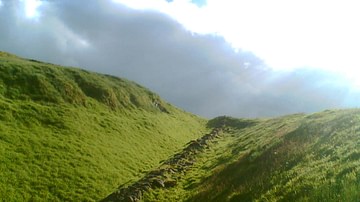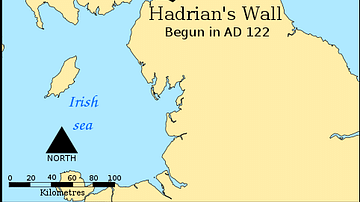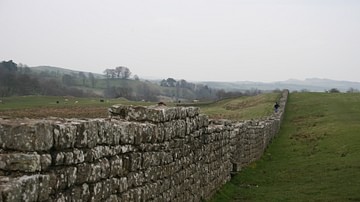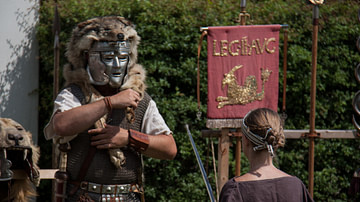Search
Did you mean: Antigone?
Search Results

Definition
Antonine Wall
The Antonine Wall was the north-west frontier of the Roman Empire. Located in central Scotland, north of Edinburgh and Glasgow, the Wall was a linear barrier that stretched from the Firth of Forth near Bo'ness to the Clyde estuary at Old...

Definition
Antonine Plague
The Antonine Plague, sometimes referred to as the Plague of Galen, erupted in 165 CE, at the height of Roman power throughout the Mediterranean world during the reign of the last of the Five Good Emperors, Marcus Aurelius Antoninus (161-180...

Image
Antonine Wall
On the north-west frontier of the Roman Empire, the Antonine wall was built c. 140 CE on the orders of Antoninus Pius. The wall stretched from the Firth of Forth to the Clyde estuary.

Image
Map Indicating the Antonine & Hadrian Walls
A map indicating the location and extent of the Antonine Wall (140s CE) and Hadrian's Wall (122 CE).

Video
History's Deadliest Pandemics: From Antonine Plague To COVID-19
Based on the infographic released by visualcapitalist.com: https://www.visualcapitalist.com/history-of-pandemics-deadliest/This video visualizes some of history’s most deadly pandemics, from the Antonine Plague to the ongoing Novel Coronavirus...

Video
The Antonine Wall in Scotland
The Antonine Wall in Scotland is the northernmost frontier monument of the Roman Empire. In 2008 this archaeological monument became a UNESCO World Heritage Site. This video was created 2007 within the framework of the European project "Frontiers...

Article
Plague in the Ancient & Medieval World
The word 'plague', in defining a lethal epidemic, was coined by the physician Galen (l. 130-210 CE) who lived through the Antonine Plague (165 - c. 180/190 CE) but the disease was recorded long before in relating the affliction of the Plague...

Definition
Hadrian's Wall
Hadrian's Wall (known in antiquity as the Vallum Hadriani or the Vallum Aelian) is a defensive frontier work in northern Britain which dates from 122 CE. The wall ran from coast to coast at a length of 73 statute miles (120 km). Though the...

Article
Reactions to Plague in the Ancient & Medieval World
Throughout history, epidemics and pandemics of plague and other diseases have caused widespread panic and social disorder even, in some instances, when the people of one region were aware of a pervasive infection elsewhere. In the case of...

Article
Legions of Britain
After the Roman emperor Claudius (r. 41-54 CE) successfully conquered Britain in 43 CE, four legions were left there to maintain the peace: XIV Gemina, II Augusta, IX Hispana, and XX Valeria Victrix. However, by the end of the decade, XIV...